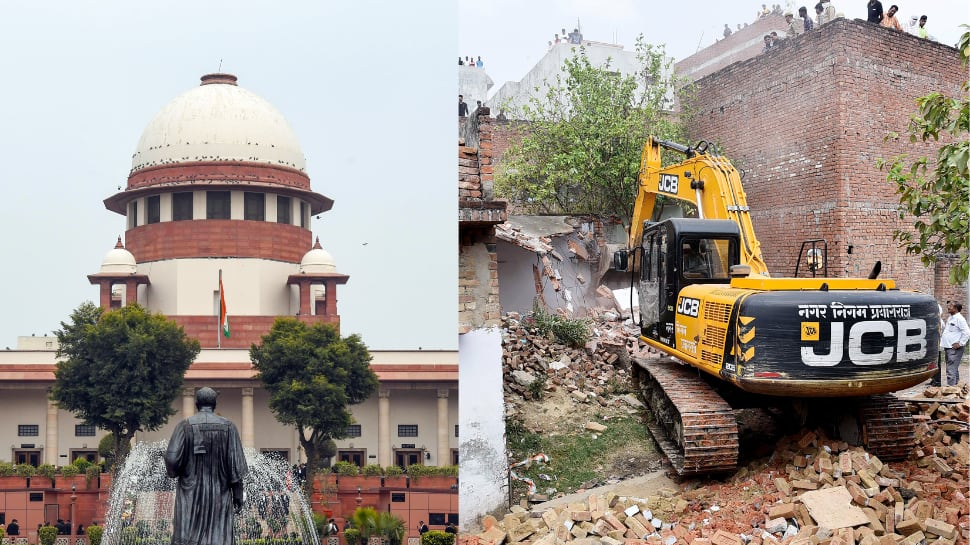Ending Arbitrary Demolitions: Supreme Court’s Guidelines on Bulldozer Actions


Table of Contents
ToggleIntroduction
The Supreme Court’s (SC’s) guidelines on Bulldozer action to abolish the controversial use of bulldozers in administrative actions marks a significant shift in addressing the balance between governance and justice. That is associated with the demolition of structures deemed illegal, this practice has sparked widespread debate over its fairness and potential misuse. By prohibiting this practice, the Supreme Court has emphasized the importance of upholding constitutional principles, ensuring accountability, and protecting the rights of all citizens in India.
Supreme Court pronounced the verdict on ‘bulldozer justice’ and laid down pan-India guidelines on demolition of properties. While announcing the verdict, the SC clarified that “the executive cannot replace the judiciary in core function.” The Rule of law provides a framework to ensure individuals know their property will not be taken away arbitrarily.
Define Bulldozer justice:
Bulldozer Justice refers to the instant justice mechanism that is propagated by the governments of various states to punish the alleged rioters and protestors by the demolition of their houses, stalls, or any construction with the use of JCB.
Due process:
Due process is a requirement that legal matters be resolved according to established rules and principles and that individuals be treated fairly. Due process applies to both civil and criminal matters.
What are the guidelines, passed by the Supreme court:
The guidelines laid down by the supreme court place emphasis on transparency and giving the accused and their family sufficient time to handle their affairs.
The SC clarified that the guidelines will not apply to “an unauthorised structure in any public place such as road, railway’s properties, foot path and any river body or water bodies and also to case where there is an order for demolition made by a court of Law.
SC Guidelines on Demolition Procedures:
• Mandatory notice period:
o The Court mandates that a minimum of 15 days’ notice must be given to the property owner or occupier before a demolition.
o This notice must outline the reasons for demolition and schedule a “personal hearing” to allow property owners a chance to contest.
• Hearing and final order:
o Authorities must conduct a hearing and document all proceedings.
o The final demolition order must include the arguments presented by the owner, the reasons for demolition, and whether full or partial demolition is required.
o The Court emphasised that demolitions should be the last resort and ordered only when deemed absolutely necessary.
• Post-order process:
o If a final order for demolition is issued, a 15-day period will follow to allow the owner time to either remove the structure or appeal in court.
o Authorities must also record a video of the demolition and prepare an inspection and demolition report listing the personnel involved.
What is the reasoning behind the Supreme Court’s guidelines:
The Supreme court relied on several fundamental constitutional and legal principles that are violated when the illegal demolition of an accused person’s property takes place.
• Separation of powers:
o The Court asserted that the judiciary, not the executive, is responsible for determining guilt.
o It emphasised that punishing an accused by demolishing their property without a judicial trial oversteps executive boundaries.
• Public trust and Transparency:
o The Court highlighted the need for transparency, stating that public officials should be held accountable for misuse of authority, particularly when demolitions target properties merely because the owner is an accused.
The Supreme Court also said the guidelines are necessary to ensure that the government acts transparently and hold them accountable when they don’t.
• Right to shelter:
o The SC noted that demolitions affect not only the accused but also other family members who have a constitutional right to shelter under Article 21 of the Constitution.
o The guidelines aim to protect these individuals from losing their homes unjustly.
Conclusion:
The Supreme Court’s abolition of bulldozer-driven administrative actions stands as a testament to the enduring strength of constitutional values and the rule of law. This landmark decision reinforces the importance of due process, equity, and accountability in governance. this judgment serves as a reminder that fairness and legal integrity must remain at the heart of all administrative measures, ensuring the protection of every citizen’s rights and dignity.



1 comment